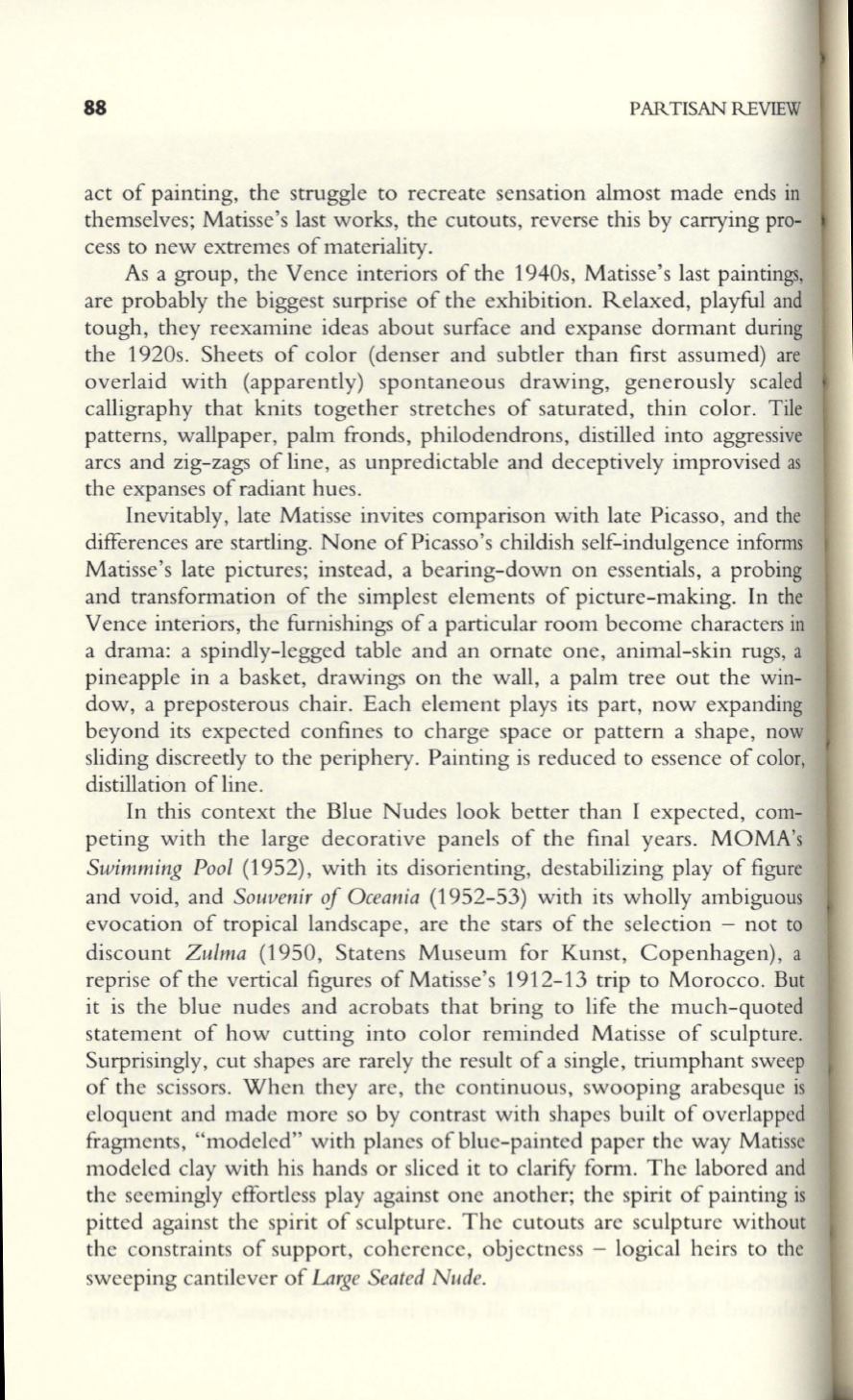
88
PARTISAN REVIEW
act of painting, the struggle to recreate sensation almost made ends in
themselves; Matisse's last works, the cutouts, reverse this by carrying pro–
cess
to
new extremes of materiality.
As a group, the Vence interiors of the 1940s, Matisse's last paintings,
are probably the biggest surprise of the exhibition. Relaxed, playful and
tough, they reexamine ideas about surface and expanse dormant during
the 1920s. Sheets of color (denser and subtler than first assumed) are
overlaid with (apparently) spontaneous drawing, generously scaled
calligraphy that knits together stretches of saturated, thin color. Tile
patterns, wallpaper, palm fronds, philodendrons, distilled into aggressive
arcs and zig- zags of line, as unpredictable and deceptively improvised as
the expanses of radiant hues.
Inevitably, late Matisse invites comparison with late Picasso, and the
differences are startling. None of Picasso's childish self-indulgence informs
Matisse's late pictures; instead, a bearing-down on essentials, a probing
and transformation of the simplest elements of picture-making.
In
the
Vence interiors, the furnishings of a particular room become characters in
a drama: a spindly-legged table and an ornate one, animal-skin rugs, a
pineapple in a basket, drawings on the wall, a palm tree out the win–
dow, a preposterous chair. Each element plays its part, now expanding
beyond its expected confines to charge space or pattern a shape, now
sliding discreetly to the periphery. Painting is reduced to essence of color,
distillation of line.
In
this context the Blue Nudes look better than I expected, com–
peting with the large decorative panels of the final years. MOMA's
Swimming Pool
(1952), with its disorienting, destabilizing play of figure
and void, and
Souvenir oj Oceania
(1952-53) with its wholly ambiguous
evocation of tropical landscape, are the stars of the selection - not to
discount
Zulma
(1950, Statens Museum for Kunst, Copenhagen), a
reprise of the vertical figures of Matisse's 1912-13 trip to Morocco. But
it is the blue nudes and acrobats that bring to life the much-quoted
statement of how cutting into color reminded Matisse of sculpture.
Surprisingly, cut shapes are rarely the result of a single, triumphant sweep
of the scissors. When they are, the continuous, swooping arabesque is
eloquent and made more so by contrast with shapes built of overlapped
fragments, "modeled" with planes of blue-painted paper the way Matisse
modeled clay with his hands or sliced it to clarify form. The labored and
the seemingly effortless play against one another; the spirit of painting is
pitted against the spirit of sculpture. The cutouts are sculpture without
the constraints of support, coherence, objectness - logical heirs to the
sweeping cantilever of
Large Seated Nude.


